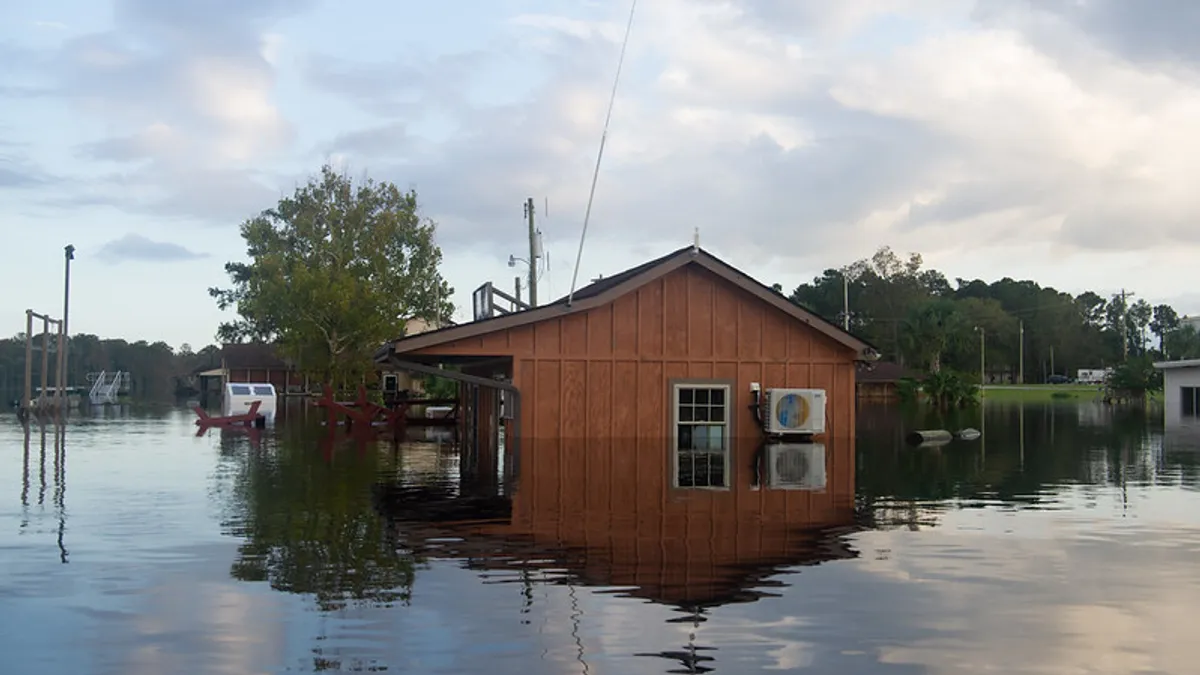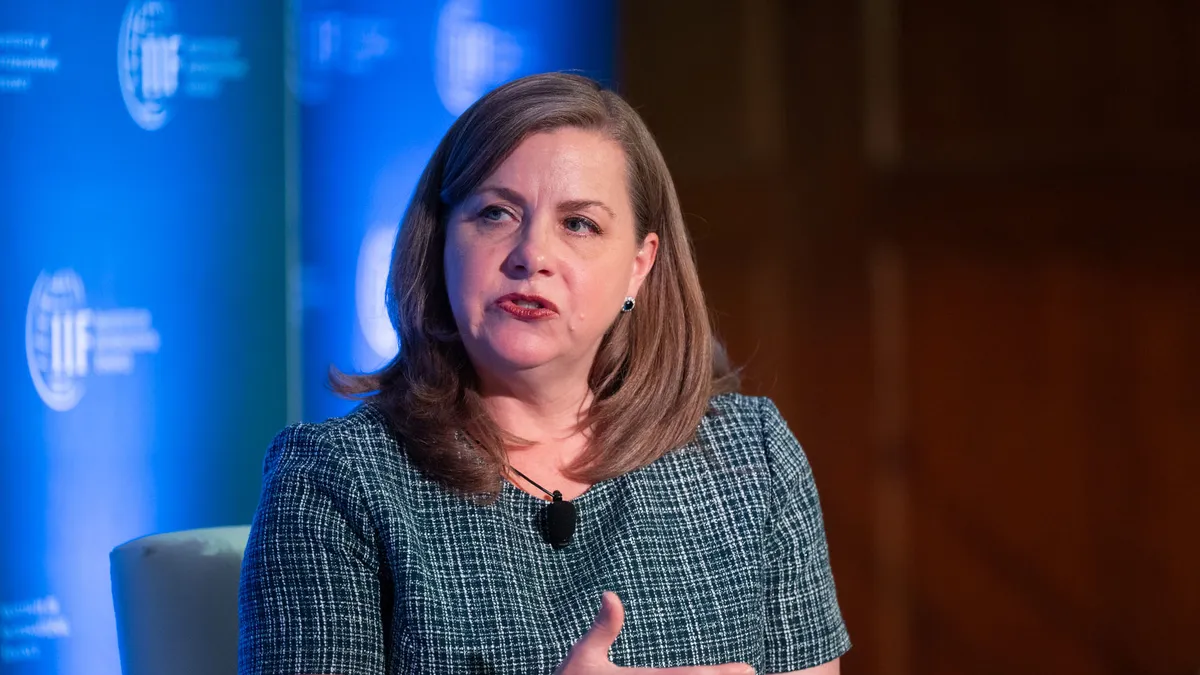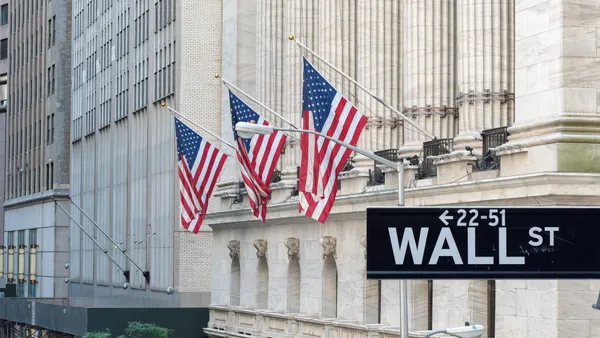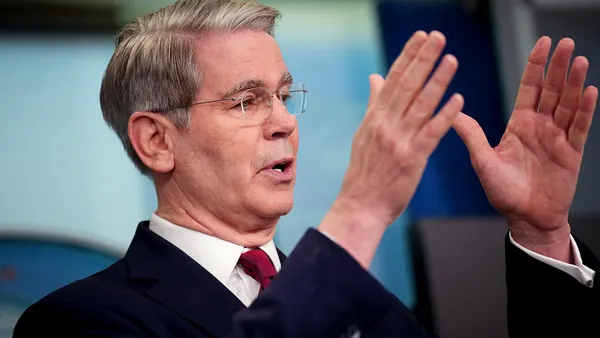Dive Brief:
- Researchers at the New York Federal Reserve Bank on Friday published a paper that outlines a new approach toward assessing the exposure of large global banks to climate-related risks.
- Climate change can affect banks in two ways: Physical risks, like flooding, pose tangible dangers to businesses. Transition risks are brought on by increasingly stringent governmental regulation in pursuit of a lower-carbon economy. The new study looks at transition risks for 27 global banks.
- For the Fed, this study marks a step in the direction of implementing climate stress tests for banks, a notion that has been questioned by Republican lawmakers, according to Reuters.
Dive Insight:
The 27 banks in the Fed study account for 80% of the oil and gas loan market share.
"Banks that provide financing to fossil fuel firms are expected to suffer when the default risk of their loan portfolios increases, as economies transition into a lower-carbon environment," the researchers stated. "If banks systemically suffer substantial losses following an abrupt rise in the physical risks or transition risks, climate change poses a considerable risk to the financial system."
Researchers at the New York Fed outlined a test for financial institutions to measure the severity posed by transition risks. They propose using stranded asset portfolio returns as a proxy measure for transition risks — the policy changes, such as carbon taxes, that regulators will enact to make shift toward a greener economy.
The paper defines a measure called CRISK, which is "the expected capital shortfall of a financial institution in a climate stress scenario.” Researchers found that CRISKs increased substantially for banks in 2020. The paper documented the rise in CRISKs when energy prices crashed in 2020.
The amount of capital Citi, for example, would have needed to raise to restore a prudential capital ratio under the climate stress scenario soared by $73 billion last year.
Climate risk generally moves in tandem for large banks from the U.S., U.K., Canada, Japan and France, researchers found. Looking ahead, researchers hope to incorporate physical risks into future assessments.
They also underlined the possibility of reassigning bank-level CRISK to country-level CRISK, and thus provide deeper macroeconomic guidance.
The Biden administration in May issued an executive order for Treasury Secretary Janet Yellen to recommend steps this fall to reduce the risks climate change poses to the financial sector. The administration also pledged to cut greenhouse gases by around 50% from 2005 levels over the next nine years.
Fed Chair Jerome Powell told the Senate Banking Committee in July that U.S. banks may be required to conduct tests to analyze the risks of climate change in the future, Bloomberg reported. “My guess is that’s a direction we’ll go in, but we’re not ready to do yet,” he said.
Powell added that in Europe, climate stress scenario exercises are “proving to be a very profitable exercise both for the financial institutions and for regulators.”














